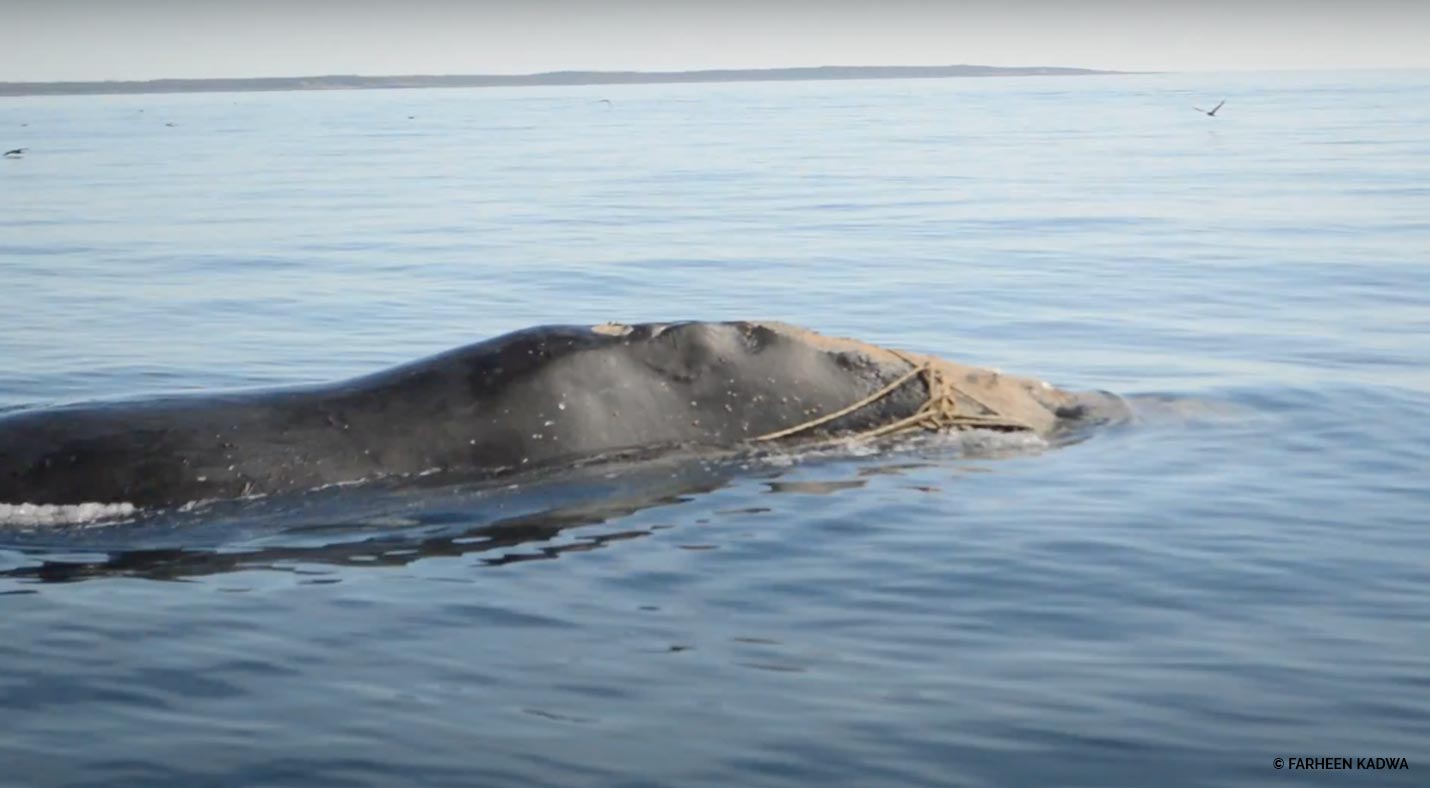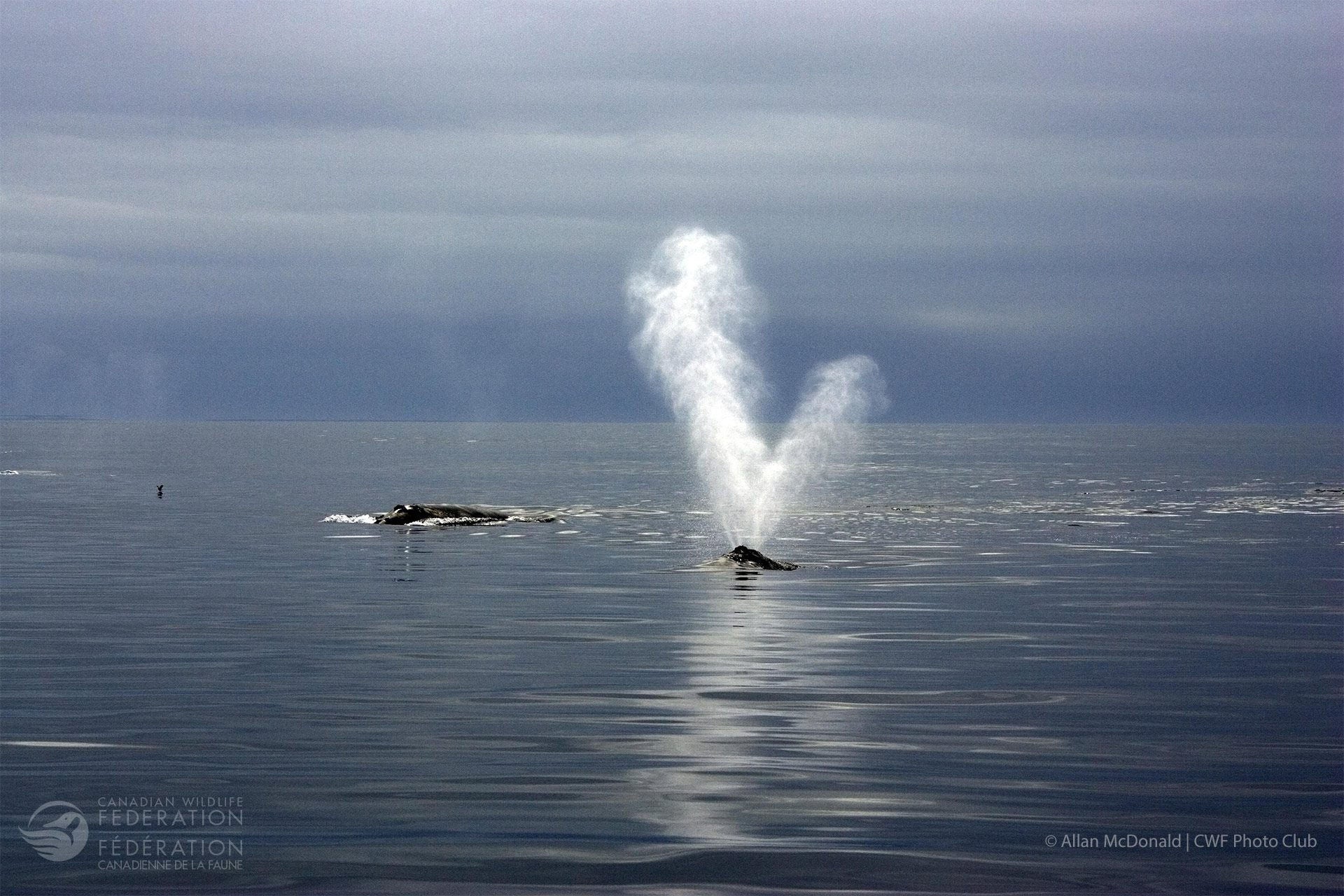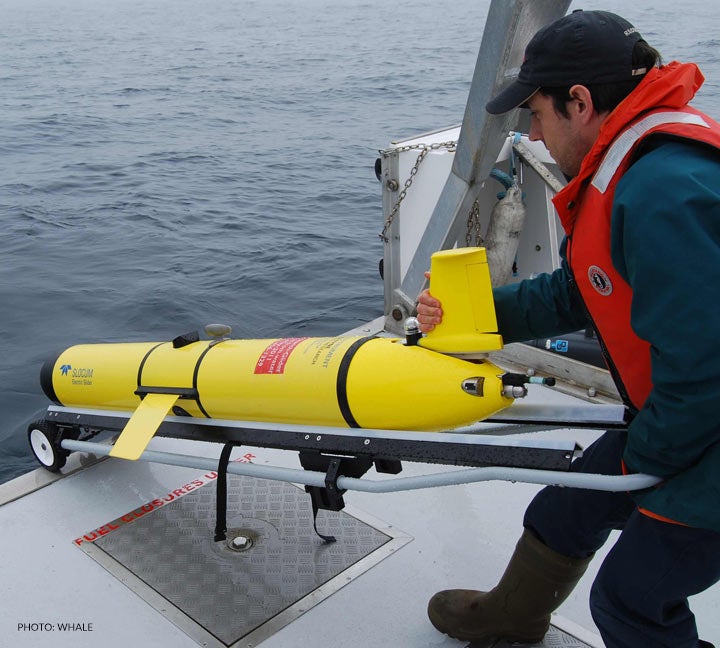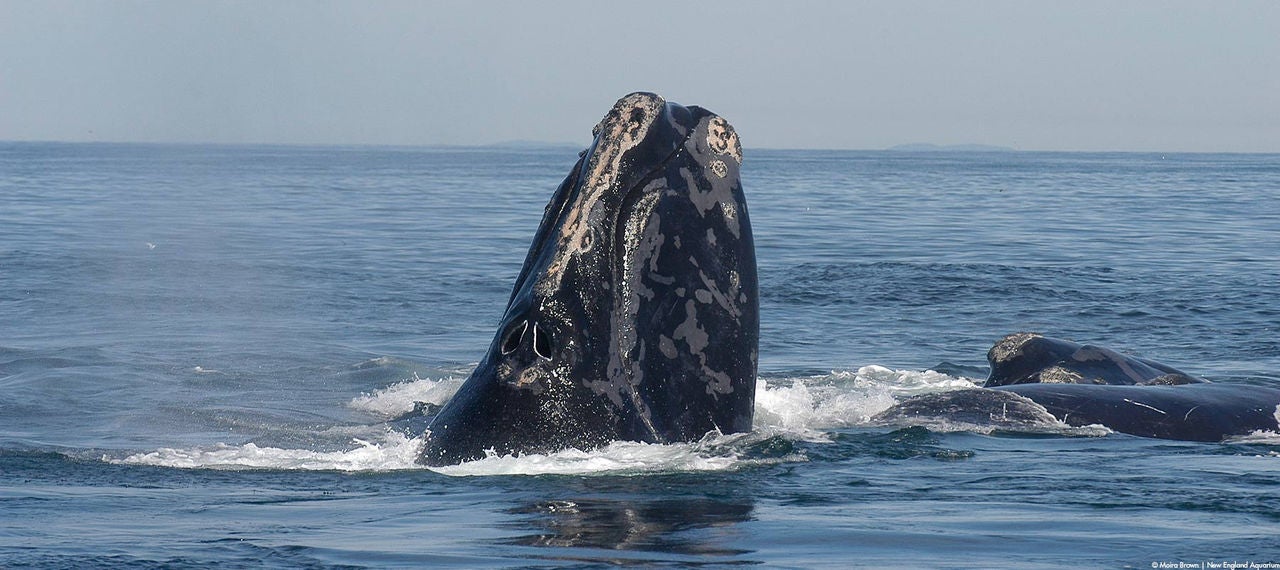A Dangerous Web We Weave
Every year about a quarter of North Atlantic Right Whales become entangled in fishing gear. Some result in minor scars, but others involve ghastly deaths. An entangled whale has a harder time to move around freely, reproduce and eat. Entanglements can lead to infection and even cut through to the muscle and bone.
When a whale can’t escape the binding, they can drown or their deaths can be drawn out for months. The fact that 85 per cent of North Atlantic Right Whales have scarring from entanglement in fishing gear proves that this threat is incredibly real for these mammals.
You are likely aware that fishing rope can be dangerous for marine animals.
But how and where do these entanglements occur? Perhaps the most common source of entanglements is rope used in fixed-gear fisheries. This term refers to fisheries that set gear on the seafloor and leave it untended for hours or days to catch species like crab, lobster and halibut. The catch is retrieved using a rope connecting the gear to a buoy on the surface.
The problem is that many of these fixed-gear fisheries are densely fished, meaning there can be thousands of vertical lines in the water that make safe passage challenging for sea turtles, seals, whales, and seabirds.
In Eastern Canada, the issue of entanglement has come to the forefront because of the critically endangered North Atlantic Right Whale. These whales spend their summers along the coasts of Atlantic Canada but are facing extinction because of deaths caused by entanglements in fishing ropes and collisions with vessels.
Presently, fishing areas are closed in waters where Right Whales are present to ensure their protection. These closures, however, have a significant impact on commercial fisheries and the coastal communities that depend on this industry.
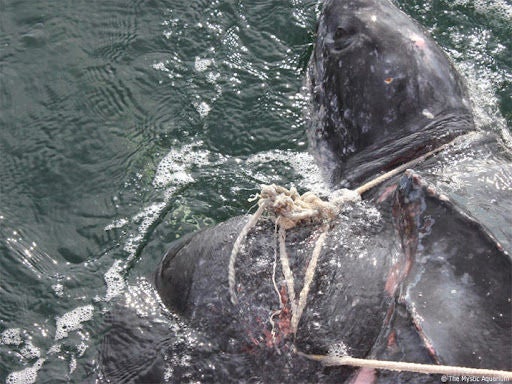
Real Solutions Require Real Change
Change in the way we do things in the real world. Humans are not going to stop harvesting the ocean for its bounty. The oceans feed us, sustain us, employ us. But what we must stop is the harm we are doing while we harvest. We know now that fisheries can be sustainable. We know that marine wildlife can be protected. If we want to see different outcomes—fewer entangled whales, marine wildlife populations growing not shrinking, humans and marine wildlife coexisting–then we must do things differently.
Change is necessary, but not just for the sake of doing things differently, not just hoping it will work, not just guessing at what might be a better way. Meaningful, useful change requires careful research, real-life testing, followed by industry-wide sharing, education, and adoption. That’s why CWF has been at the forefront of research, testing and sharing.
Change is also hard. Many of the technologies and materials used in fisheries have been used for centuries. They are durable, inexpensive to produce and easy to use, and so there has been little reason for change. As we have learned more and more in the last few decades about the alarming cost to whales from fishing gear, there has been a growing awareness that something must be done.
The immediate approach–an urgent response to an acute crisis–has been to exclude fishing from areas when whales are present. While this can be effective, this approach suffers from two fundamental problems:
- Marine wildlife is mobile, moving from location to location so it is challenging and expensive to know where they are and when to provide protection; and
- These closures jeopardize commercial fisheries and damage the livelihoods of those in coastal communities who depend on them.
There is a better way to reduce entanglements and CWF has been leading the way to make it happen.
The Problem
Conventional equipment relies on vertical lines strung from lobster pots and crab traps (as well as gill nets) at the bottom of the ocean floor to buoys at the surface marking their location and used to haul them up when full. These sturdy plastic (i.e., polypropylene) ropes are what cause the entanglements when whales swim into them, leaving the whale dragging heavy gear behind them as the ropes dig deeper into their flesh and fins. The whales suffer horrific injuries and, often, prolonged agonizingly slow deaths.
A recent analysis from the Woods Hole Oceanographic Institution found that 85 per cent of all catalogued Right Whales carry injuries and scars from being entangled at least once in their lives, and more than 25 per cent receive new scars every year. More than 50 per cent have been entangled two or more times. Thanks to the courage, commitment and expertise of on-call rescue specialists, some whales are disentangled. But only a small percentage are rescued, and the risk to everyone involved in these encounters is high.

The Technologies
Rope on-demand
- Also known as ropeless gear or pop-up gear, can be used to leave something on the ocean floor and retrieve it later without leaving a persistent line in the water column. On-demand technology bypasses the need to mark bottom gear with static vertical lines by using different types of remote-controlled release systems. Some of these systems have been used for decades in scientific and military applications, while others were purpose-built for commercial fishing.
Two general types of on-demand systems are being evaluated: with bottom-stowed endlines, the trap is dropped to the sea bottom with a large coil of rope attached to it. When sent a command from the surface via an acoustic device (like a basic depth sounder that emits brief sounds that are not intrusive to undersea wildlife), a buoy attached to one end of a spool line releases and floats to the surface for retrieval. Another type is known as variable buoyancy traps or lift-bags. With these, the trap rests at the bottom until a command from the boat at the surface triggers a compressed-air device to inflate a balloon-like buoy which raises the trap to the surface for retrieval. This system uses no endline at all.
Weak Rope
- There has been some talk about the use of so called “weak rope.” It may be overly optimistic. Here’s why. North Atlantic Right Whales have not been observed entangled in rope that breaks at less than 1,700 pound-force (lbf). As a result, some experts have suggested this indicates low-breaking strength ropes could reduce the severity of entanglements and deploying weaker rope would mean that a Right Whale could free itself from an entanglement, preventing injury, stress, even death.
There is not much evidence for this to date and it is not a simple matter of replacing lines. Different minimum tensile line strengths are required in different commercial fisheries. For example, lobster fisheries that use only single or double traps can haul gear to surface using rope with relatively low breaking strength (perhaps 650 lbf), but those that use trawls of 10 to 40 lobster pots, require much stronger lines to bring the load to the surface. The same goes for the larger pots in deeper water that are used by the snow crab fishery. The concern is that if applied in situations where it will fail frequently it will result in more potentially lethal “ghost gear.”
Research and testing continue, including on a variety of devices and rope attachments that can create low-strength break points in lines to possibly reduce entanglement severity.
Assessing the Technologies
- Developing the gear is essential of course, but so too is testing the ropeless fishing technologies and gear in real-world applications. Since 2019 CWF has been conducting gear trials in partnership with commercial and First Nations fish harvesters in Atlantic Canada to assess various ropeless (on-demand) fishing gear systems as a way of preventing marine mammal entanglement. With funding from the Canada Nature Fund and PEW Charitable Trusts, CWF has conducted more than 600 at-sea deployments of seven different on-demand lobster and snow crab systems. It has also worked intensively with 14 captains and their crews from different regions of Nova Scotia, New Brunswick and Prince Edward Island. Results of these tests have enabled CWF to provide technical reviews and feedback to gear developers on the suitability of their gear and how to improve their systems, and has informed which systems are loaned as part of the CanFish Gear Lending Program for areas closed to protect the North Atlantic Right Whale.
Making the Technologies Accessible
- The true test of any technology is whether it gets used. Real-world assessments are essential of course, but not just in controlled studies. Once equipment has been reviewed and has met standards for usefulness and safety, it is absolutely crucial that the people who will be relying on this gear for their livelihoods get access to it. Their input will determine the technology’s success.
That is why CWF launched the CanFish Gear Lending Program, the first such initiative for adaptive fishing gear in Canada. Based in Halifax and supporting the fishing industry throughout Nova Scotia, New Brunswick and Prince Edward Island, the CanFish Gear Lending Program provides fish harvesters with access to a range of gear modifications and on-demand technologies and offers the financial and technical support they need to determine what is best for their fishery and fishing conditions.
Did You Know?
¼
Each year about one quarter of all North Atlantic Right Whales become entangled in fishing gear.
83%
Eighty-three per cent of North Atlantic Right Whales have scarring from entanglement in fishing gear.
356
Fewer than 356 North Atlantic Right Whales were still alive at the end of 2022.
What YOU Can Do
Donate
Learn More About Our Coasts and Oceans
Become a Part of The Watch
- 0
- 1
- 2
- 3






